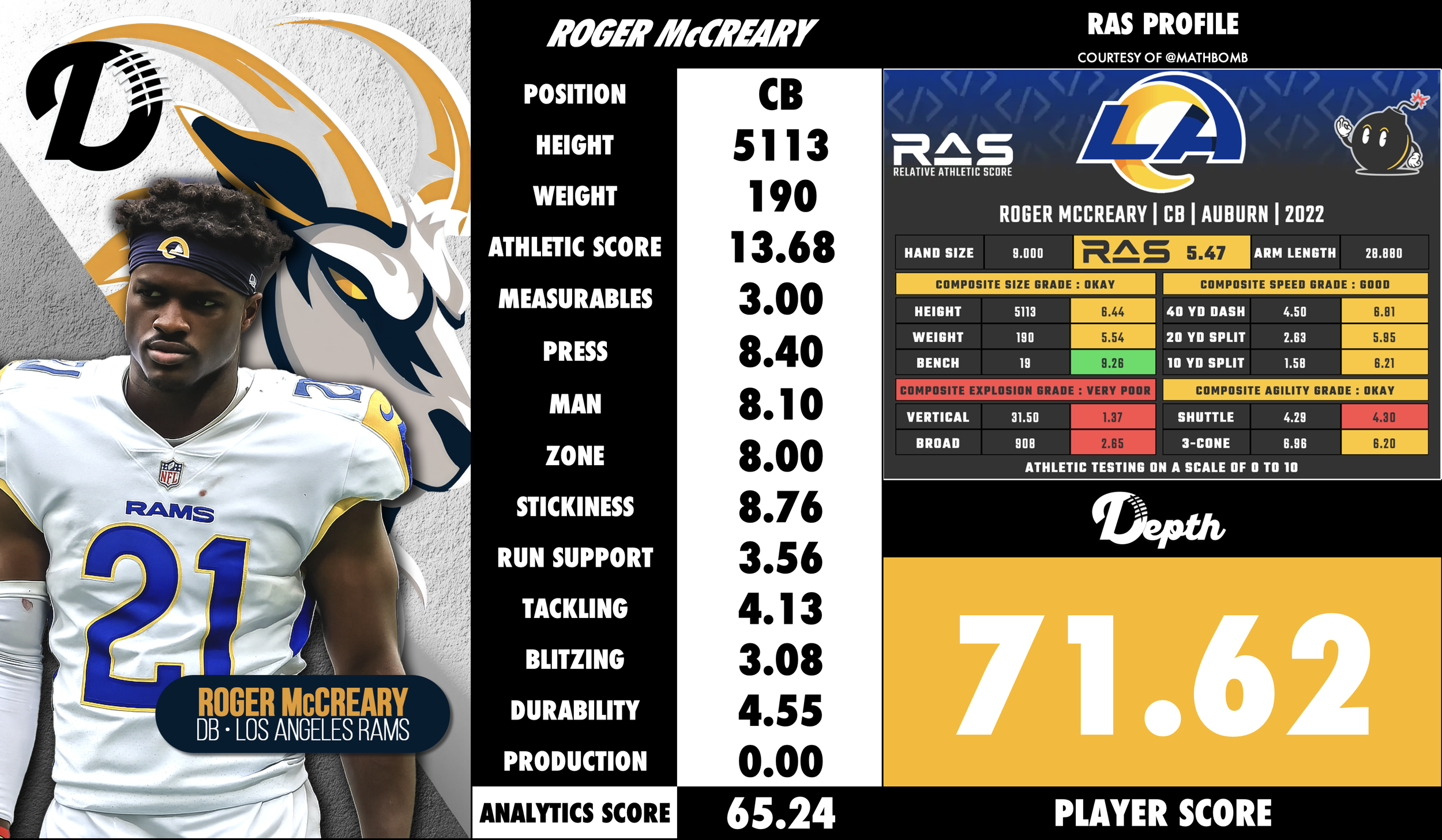
Roger McCreary
Summary
Roger McCreary was selected in Round 2 (#35 Overall) in the 2022 Draft out of Auburn University. McCreary entered the league as a technically polished and highly competitive cornerback with experience across press‑man, off‑man, and zone coverages at Auburn. While his measurables (arm length, long‑speed) were considered less than ideal, his tape showed fluid hips, quick feet, strong ball‑skills and a willingness to mix it up in run support. His projection was as an immediate starter or early contributor who might excel in match‑up or sub‑package roles, with upside as a full‑time starter depending on scheme fit and development.
Strengths
Fluid footwork and smooth hip transitions: McCreary displays a clean back‑pedal, good transition into forward movement, and maintains balance when mirroring receivers.
Competitive nature and press‑man savvy: Despite being under 6‑foot, he shows confidence in press‑coverage, quick hand strikes at the line, and the ability to disrupt receiver timing. SI
Strong ball‑skills and awareness: He routinely locates the ball, jumps routes, and uses positioning and sideline leverage to maximize coverage opportunities.
Run‑support willingness and physicality: McCreary shows aggressiveness in coming downhill, engaging blocks, and making tackles in the run game rather than simply hanging back. SI
Scheme‑versatility in alignment: While better inside, he handled outside corner duties, travelled with receivers, and showed capability in off‑man and zone looks—giving teams flexibility in his usage.
Weaknesses
Below‑ideal arm length and reach for boundary corner blitzer roles: His arm span (~28⅞″) and height (5′11″) were flagged as limiting factors, particularly when matched up with large or long‑armed receivers. SI
Top‑end long speed and recovery against deep threats slightly average: While his movement is solid, his straight‑line burst and recovery speed do not match the elite tier of coverage‑specialist corners.
Footwork and change‑of‑direction sometimes inconsistent: Some reports note that when off his press coverage or beaten initially, his recovery isn’t always seamless. SI
Tendency to give up inside‑leverage or separation when mis‑aligned: While competitive, in certain match‑ups his length or leverage disadvantage shows when facing oversized receivers or tight ends. Big Blue View
Ceiling somewhat scheme‑dependent: Given his physical profile and limitations, his best path to high impact is in systems that minimize his disadvantages (length, pure speed) and maximize his strengths (release disruption, awareness, versatility). SI
Fit & Outlook
McCreary fits best in defensive schemes that value physical, technical corners who can play press or off coverage, roam, and contribute both in run and pass phases. He is particularly well‑suited for systems whose nickel corners can press, play smart leverage, and handle receivers in a variety of alignments (boundary, slot, travelling receivers). A scheme that uses pattern‑matching coverages, rotates corners, or values versatility over pure size/speed maximize his value. He may be less optimally used in systems that ask him to shadow ultra‑fast receivers on the boundary all game without relief, or where he must beat very large/tall receivers with length repeatedly. Looking ahead, McCreary’s outlook is strong. His floor is that of a reliable starter or top‑value slot corner who can contribute immediately, hold down one side of the field, deliver steady coverage, and make plays. His upside includes becoming a well‑rounded nickel corner who can be counted on in big games, contribute to turnovers, and be a long‑term piece in a secondary. The key to unlocking that upside will be continued improvement in his long‑speed recovery, technique refinement especially against physical receivers, and remaining in a system suited to his skill set rather than fighting mismatches.


